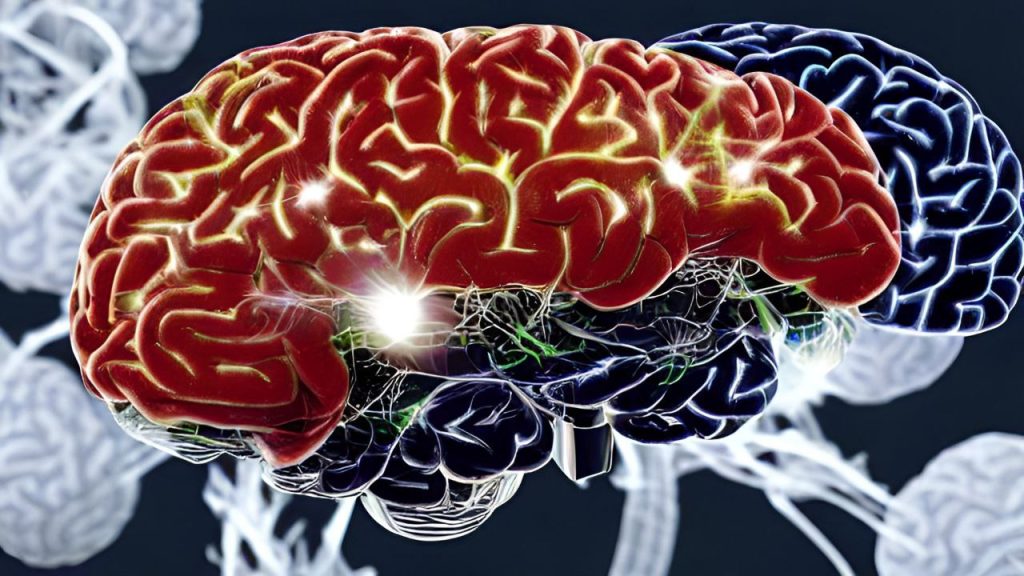Understanding the Central Nervous System: The Brain
The brain, as a vital component of the central nervous system (CNS), is a remarkably intricate organ responsible for controlling and coordinating various bodily functions. This article provides a comprehensive overview of the different parts of the brain, including the cerebral hemispheres, cerebellum, and brainstem. Understanding the structure and functions of these brain regions is crucial for comprehending the complexities of human cognition, behavior, and overall neurological health.

The Brain
I. Cerebral Hemispheres: The cerebral hemispheres, often referred to as the cerebrum, are the largest and most prominent part of the brain. They consist of two distinct halves, the left and right hemispheres, which are connected by a bundle of nerve fibers called the corpus callosum. The cerebral hemispheres play a critical role in higher cognitive functions, such as consciousness, perception, memory, language, reasoning, and voluntary movement.
- Gray Matter: The outer portion of the cerebral hemispheres, known as gray matter, contains billions of specialized cells called neurons. Neurons are responsible for processing and transmitting information within the brain. This region is rich in cell bodies, dendrites, and synapses, forming intricate neural networks that underlie complex cognitive processes.
- White Matter: The inner portion of the cerebral hemispheres is composed of white matter, which primarily consists of axons—long, slender projections that transmit electrical impulses between neurons. These axons form tracts or pathways that facilitate communication within the brain and connect different regions of the CNS.
- Ventricles: The cerebral hemispheres enclose interconnected fluid-filled cavities called ventricles. These ventricles are responsible for producing and circulating cerebrospinal fluid (CSF), a clear fluid that provides cushioning and nourishment to the brain. CSF also plays a vital role in removing waste products from brain tissue.
II. Cerebellum: The cerebellum, located at the posterior part of the brain, beneath the cerebral hemispheres, is responsible for coordinating and regulating motor movements, posture, balance, and muscle tone. It consists of two lateral lobes and a midline portion. The cerebellum receives sensory information from various parts of the body and integrates it with motor signals from the cerebral cortex, enabling smooth and coordinated movements.
III. Brainstem: The brainstem is a crucial region that connects the cerebrum and cerebellum to the spinal cord. Traditionally, it encompasses four components: the diencephalon, midbrain, pons, and medulla. However, in modern usage, the term “brainstem” typically refers to the midbrain, pons, and medulla.
- Midbrain: The midbrain, located between the diencephalon and the pons, plays a vital role in relaying sensory and motor information. It contains various nuclei and serves as a pathway for the transmission of visual and auditory signals.
- Pons: The pons, located below the midbrain, is involved in the regulation of sleep, respiration, and facial sensation. It serves as a bridge connecting different parts of the brain, facilitating the transfer of information between the cerebellum and cerebral cortex.
- Medulla: The medulla, also known as the medulla oblongata, is the lowermost part of the brainstem. It plays a critical role in regulating essential autonomic functions, including breathing, heart rate, blood pressure, and reflex activities such as swallowing and coughing.
The brain, comprising the cerebral hemispheres, cerebellum, and brainstem, is the epicenter of human cognition, behavior, and neurological functions. The cerebral hemispheres are responsible for higher cognitive processes, while the cerebellum coordinates motor movements and balance. The brainstem serves as a vital conduit, connecting the brain to the spinal cord and regulating essential autonomic functions. Understanding the structure and functions of these brain regions is fundamental to unraveling the mysteries of human neurobiology and advancing the field of neuroscience.











